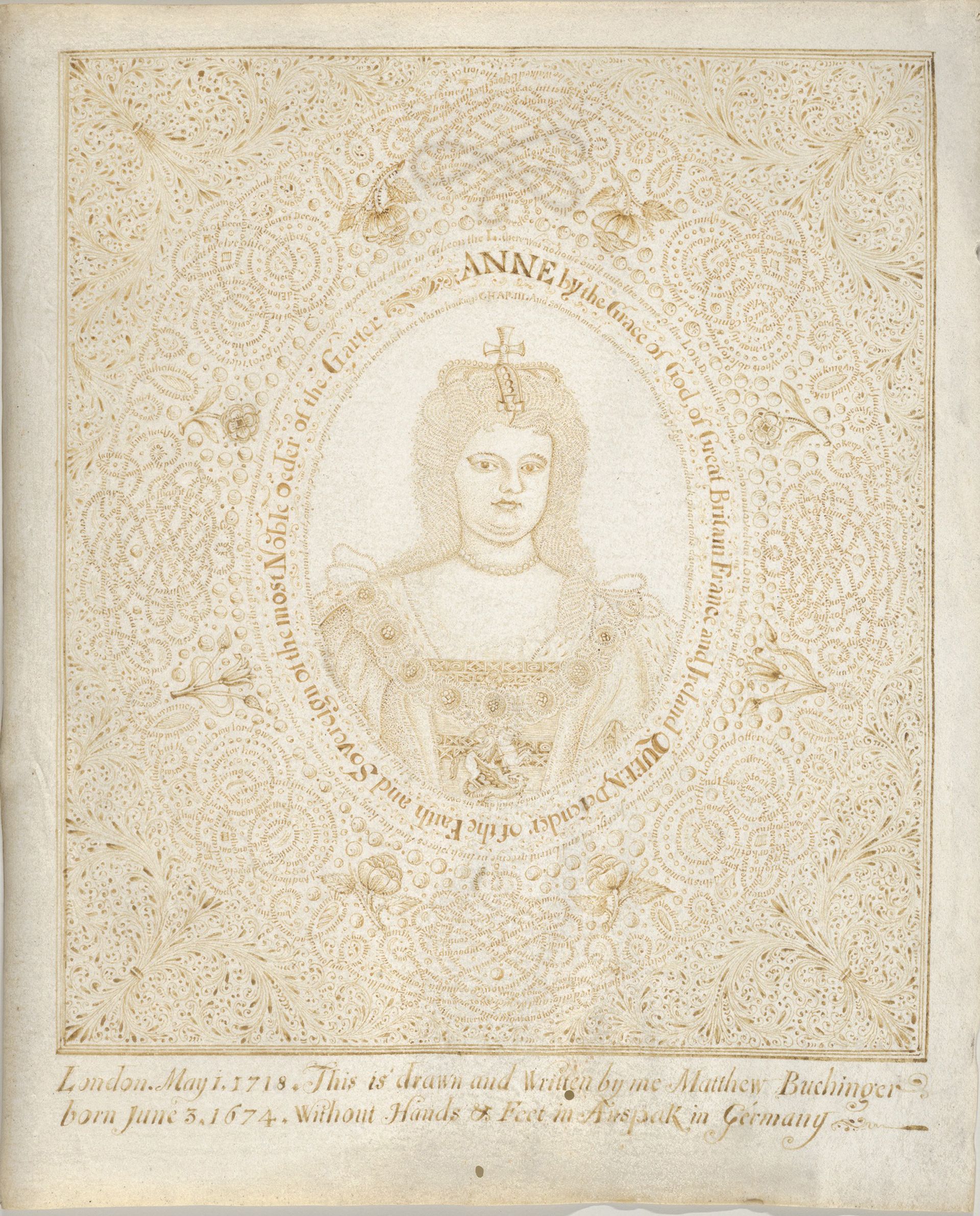Ricky Jay, 67, is a polymath—magician, actor, author, collector—with a fondness for the language of earlier eras. He describes the legless and armless German entertainer Matthias Buchinger (1674-1739), whose work Jay has loaned for an exhibition at the Metropolitan Museum (until 11 April), as “an overachieving phocomelic”, referring to the congenital disease that left him without limbs, and a “micro-indefatigabilist”.
Standing at just 29 inches tall, Buchinger played musical instruments, performed magic tricks and drew inscriptions in miniscule letters, which he sold at his shows, signing his name in reverse. Among the 16 works by Buchinger on view in the Met is a 1718 portrait of Queen Anne of Great Britain, in which the monarch’s hair is made up of tiny letters that spell out three chapters of the Bible’s Book of Kings. A compact vellum sheet from 1720 of his micro-calligraphy contains the Ten Commandments, the Apostles’ Creed and the Lord’s Prayer. Visitors can use magnifying glasses to inspect the tiny texts.

Besides loaning works to the Met, Jay has also published Matthias Buchinger: The Greatest German Living by Ricky Jay, Whose Peregrinations in Search of the ‘Little Man of Nuremberg’ Are Herein Revealed. We spoke with Jay about his collection.
What first attracted you to Buchinger’s work?
That he did magic without arms and legs. It didn’t need to be much more compelling than that. And then it turns out that, at each step, his life gets more and more amazing. I had a childhood interest in calligraphy, and there is something tangible about the calligraphy that is not tangible about all the other things that he did. We can’t hear the music that he played. We can’t see his tricks with balls and cups.
There’s a debate about whether Buchinger used any magnifying devices in his micrography. What do you think?
Engravers used magnification at that time. But the idea of doing it without magnification makes the performance that much stronger. I come down on the side that he probably did not use magnification, but I analyse it as a magician, trying to think of techniques he would have used and how he might have done that.
I keep hoping I’ll find out more. I keep hoping I’ll find the description of a typical card trick, rather than “he was able to deal dexterously and cheat at cards”. I’d rather have an actual account. Maybe one will come up. That’s the one thing about writing a book like this. You fear going into print, because you know there’s going to be more, but then the joy is that there will be more.

What do you collect?
Two basic areas—unusual entertainments and deception. I particularly like pieces that deal with both, so in the case of Buchinger, there is a broadside [published in 1726 about the performer], The Greatest German Living:
‘Thus he with double Art can write
At once to please and cheat the sight.’
How did you start collecting?
As a kid, I was interested in the Book of Kells. Most of my collecting was done when I was on the road performing. In those days I opened for rock groups or for [the comics] Cheech and Chong. You’d do 28 cities in 30 days. I had this ritual of visiting print shops, bookshops and libraries, then taking a long nap and going to the theater. Most of my collection was put together buying prints and broadsides for $30. Now—35, 40 years later—I have a real collection.
What’s the next step for your collection?
I have no intention in selling it. People have approached me. I don’t know yet. I’m quickly approaching the age where I should be thinking about that. The odd thing is that at one point in my life I did know, and that was when I was the curator of the Mulholland Library of Conjuring and the Allied Arts [in Los Angeles]. The owner and I decided that we would combine our collections, with a building and a theater for live acts; this was all in progress when it fell apart. [The Mulholland Library was sold in 1991 to another magician, David Copperfield, after the company that owned it went bankrupt.]
• Wordplay: Matthias Buchinger Drawings from the Collection of Ricky Jay, Metropolitan Museum of Art, New York, until 11 April. Jay will speak with the New York Times critic Michael Kimmelman on Thursday, 21 January.

